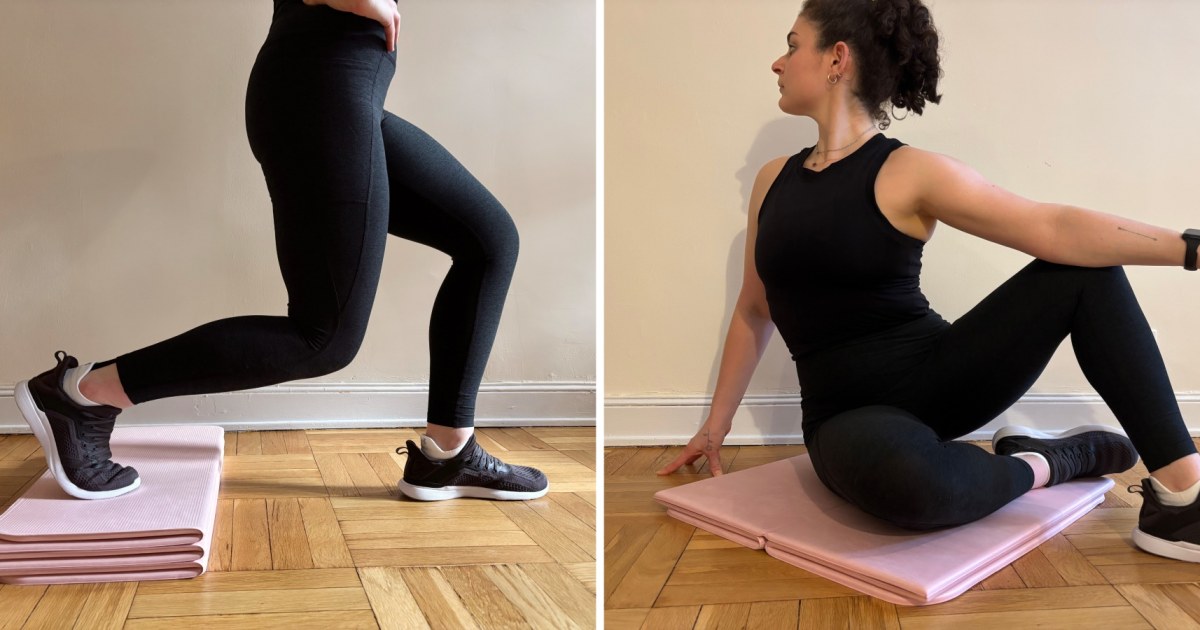Fitness
This is how many steps you should be walking a day, according to a walking expert

Walking 10,000 steps a day is one of world’s most common fitness goals. But a walking expert says this lofty target might not be needed to enjoy many of the health benefits associated with a regular stroll.
Several recent studies have attempted to identify the daily step count that offers optimal bang for your buck, and many of them have landed on a figure in the range of 7,000 to 8,000.
“It’s interesting how that number is repeated across many of these studies,” says Dr Elroy Aguiar, an assistant professor of exercise science at The University of Alabama whose recent research centres around step-based measurements of physical activity. “This figure is associated with reduced risks of mortality, cancer and cardiovascular disease.”

But that doesn’t mean walking 8,000 steps per day should be everyone’s target – there’s more nuance to it than that. Below we debunk the 10,000 steps a day myth, and explain how to settle on a daily step goal that works for you.
Why is 10,000 steps a day such a common goal?
If study after study keeps landing on 8,000-or-so steps as a worthy daily target, where does the 10,000 steps a day goal stem from?
Its origins lie in an enduring marketing campaign for a Japanese pedometer in the 1960s, around the time of the Tokyo Olympics. The machine was called the manpo-kei, which translates as “10,000 steps metre”.
“There is evidence to suggest the Japanese population, similar to the US and probably the UK, does about 5,000-6,000 steps per day on average,” Dr Aguiar says.
“Picking 10,000 is a great target because it’s a little bit higher. If you went for a 30-minute walk you would probably get around 3,000 steps, so if you take your baseline daily activity and add one session of planned exercise, you’re close to that 10,000-step goal.”
This figure has since become something of a gold-standard in marking daily movement, with countless fitness trackers setting it as their default target. It’s even influenced research into the benefits of walking.
“There have been a lot of studies looking at whether 10,000 steps is better than less activity, and that’s created an artificial confirmation bias,” explains Dr Aguiar. “People think 10,000 is very sticky. It’s a round number and it’s easy to remember, and they’ve used that in their research studies as the comparison.”
How many steps should you do per day?
We now know that walking roughly 8,000 steps a day is linked to a whole host of health benefits and for many people, it’s probably a more reasonable goal.
Recent research from the University of Granada supports the newer target, with an article from the institution claiming it provided “the first scientific proof for how many steps you need to take per day to significantly reduce the risk of premature death”. That figure was 8,000.
Meanwhile a 2023 meta-analysis published in the European Journal of Preventive Cardiology established a lower limit of 3,867 steps per day, claiming this figure was needed to see a “significant” decrease in all-cause mortality.
What both pieces of research agree on is that there’s no upper-limit to the number of steps you can do to improve these health outcomes. In other words, the more steps you do, the better – but there will be a point of diminishing returns.
Read more: 9 best running headphones to keep you in the zone, tried and tested
“If you want optimal benefits for the time you put in, you have most of the gain already if you’ve done 8,000 – then there are marginal or incremental gains beyond this point,” explains Dr Aguiar.
“And in terms of meeting the World Health Organisation’s (WHO) physical activity guidelines of about 150 minutes per week of moderate-intensity physical activity, or 75 minutes of vigorous-intensity physical activity, those numbers translate to about 7,000-8,000 steps per day. There’s a lot of sense to it, and it’s aligning quite well with what the new studies are showing.”
However, despite this debunking of the goal from the ‘70s, he doesn’t mind the fact that the 10,000 steps per day goal is so widespread.
“A lot of early studies adopted that 10,000 steps message, and it’s not a bad thing: doing more steps rather than doing less is always going to be recommended,” Dr Aguiar says. “But if you want to be accurate with what the science is showing, less than that is adequate.”
How to set a daily step goal
Finding a fitness routine that works for you is a highly individualised endeavour. In many cases, what works for one person won’t work for another, so if you’re looking to fine-tune your exercise routine then a tailored approach is the best way to go.
The same applies for a daily step goal – someone who already walks umpteen thousand steps a day is going to have a very different target to a desk worker who struggles to squeeze much movement in at all.
“One thing we need to be conscious of is setting realistic targets,” says Dr Aguiar. “If someone is doing 4,000 or 5,000 steps per day, and you tell them to do 10,000, that’s doubling their amount of daily activity, which can be problematic or even demotivating.”
Instead, he prescribes incremental increases in your daily activity levels, with a view to progressing this over time and eventually ending up north of the 8,000 steps per day mark. Fitness trackers and smartwatches can help with this.
“A lot of modern wearable devices like Garmin and Google watches look at your current level of activity then try to bump you up by a certain percentage,” Dr Aguiar says. “So, instead of setting an arbitrary goal like 10,000, your device would track that you were doing 5,000 steps a day, then it might prompt you to do 10-20 per cent more than that to improve the amount of exercise you do as a gradual progression.”
“Generally speaking, if you improve your baseline steps by about 2,000 per day, which would for most people equates to 10 or 20 per cent, that’s a sufficient amount of extra activity to improve health markers like blood pressure and body composition. But obviously we do want people to progress eventually to 7,000-8,000, and then ultimately to 10,000-plus, because that’s where we know the best benefits occur.”
So, in summary: if you’re already walking 10,000-plus steps a day, you might not need to increase this figure. If you have the time and want to further your fitness, other more intense forms of exercise could offer bonus benefits. For example, running to increase your aerobic capacity or strength training to build muscle and bolster your bone density.
But if you sit at a desk for most of the day and struggle to find time to move, walking can be an accessible way to boost your activity levels and counter this sedentary lifestyle.
Start by tracking your daily steps for seven days, then add 10-20 per cent to this to find your target for the following week. You could hit this higher step count by parking slightly further away from the office, getting off the bus or train one stop early, or heading to a cafe at lunch rather than eating at your desk.
Slowly increase this goal over time until you reach the Goldilocks spot of 8,000 steps per day or more, and enjoy walking your way to plenty of health benefits in the process.
Read more: What is exercise snacking? The 10-minute workout craze explained









